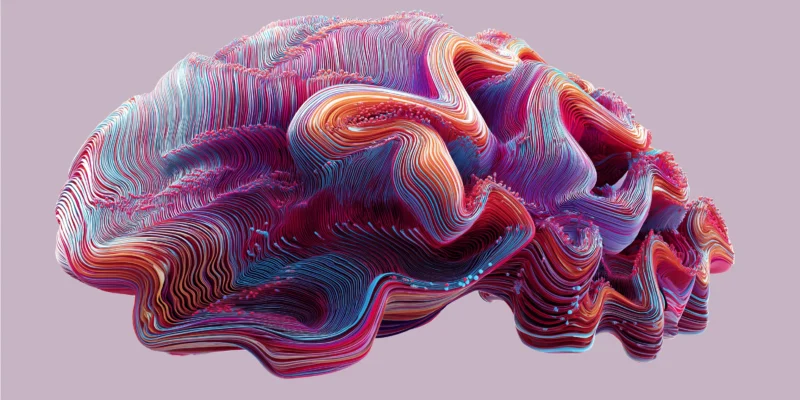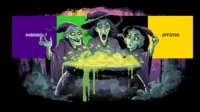In this article:
Color has a powerful impact on the human mind. From setting moods to influencing decision-making, the psychology of color plays a significant role in how we process information. For students, understanding how it affects learning can make a major difference in academic success. Whether it’s the colors in a classroom, study materials, or even personal study environments, the colors surrounding us can either enhance or hinder our ability to concentrate, retain information, and stay motivated. This article explores the psychology behind color and how students can use it to improve their learning experiences.
How Different Colors Affect Mood and Focus
Colors do more than just add beauty to our surroundings—they have a real impact on how we feel and think. The psychology of color shows that different colors can influence our mood, energy levels, and ability to focus. Some colors stimulate the brain, helping us stay alert and concentrate better, while others promote calmness and relaxation. Conversely, some colors can cause stress or discomfort, making it harder to stay focused and productive.
Understanding how color affects us can help students create study environments that support their learning. For instance, certain colors can help boost energy and mental clarity, which is useful for tasks that require focus and concentration. Other colors may create a calm atmosphere, ideal for tasks that need reflection or problem-solving. By using the right colors, students can make their study spaces more conducive to studying, ensuring they feel motivated and stay on track with their work.
Using Color in Study Materials and Organization
In addition to shaping the physical study environment, color plays a key role in organizing learning materials. Many students rely on color-coded notes, charts, and highlighters to make complex information more digestible. The psychology of color suggests that visual differentiation using hues—such as green for definitions, blue for core concepts, and yellow for key highlights—not only boosts engagement but also improves recall.
These visual strategies help reduce mental clutter, allowing students to focus more effectively. However, for more demanding academic tasks like writing a research paper, even a well-organized space may not be enough. When students feel overwhelmed despite their efforts, turning to a research paper writing service for me can provide the additional support they need. These services pair students with experienced academic writers who can assist with structuring, editing, or even guiding the research process itself—freeing up valuable time and mental energy.
By combining color-coded organization with strategic academic support, students can manage their workload more efficiently and maintain better overall performance.
Personalizing Your Study Space with Color
To truly take advantage of the psychology of color, students should personalize their study space to reflect their own preferences and learning needs. While some students thrive in calm, blue-toned environments, others may find they work better in spaces filled with energising colors. Experimenting with different color schemes can help students discover what environment works best for their concentration and creativity.

Get 300+ Fonts for FREE
Enter your email to download our 100% free "Font Lover's Bundle". For commercial & personal use. No royalties. No fees. No attribution. 100% free to use anywhere.
A study space with blue walls or blue accents (such as a blue desk or chair) can improve concentration, especially for tasks that require critical thinking, such as writing essays or solving complex problems. Similarly, green is linked to balance and relaxation, making it an excellent color for students who want to reduce stress while studying.
On the other hand, more energising colors like yellow or orange can boost creativity and motivation. Yellow is bright, cheerful, and stimulating, making it a good choice for brainstorming or creative tasks like drawing, designing, or planning. Orange can add warmth and energy to a study space, helping students maintain a positive, active mindset during longer study sessions.
Incorporation of Natural Elements
Incorporating natural elements into the study space can further enhance the calming and focus-enhancing effects of color. For example, plants with green leaves not only add a natural touch to the room but also improve air quality, which can help reduce stress and improve concentration. Pairing green plants with blue or neutral tones can create a soothing atmosphere that promotes long hours of productive study.
Some students may benefit from colorful wall art or study posters that serve as motivational reminders. Bright, positive images or inspirational quotes in warm colors like red or orange can provide an energy boost and help students stay motivated. However, it’s essential not to overdo it—too many bold colors can create distractions. For those who prefer a more minimalist approach, a neutral, calming aesthetic with touches of color, such as accent pillows, desk organizers, or a colored lamp, can help maintain focus without overwhelming the space.
How Lighting Affects Mood and Productivity
Lighting plays a significant role in how colors are perceived and how they impact mood. Bright, natural light can enhance the vibrancy of colors, making them appear more stimulating and energising. If possible, students should aim to study in a room with ample natural light. Positioning a desk near a window or using sheer curtains can help let in light while reducing harsh glare. For evening study sessions or areas with limited natural light, soft, warm lighting can complement calming colors like blue or green, making the space more relaxing and conducive to studying.
Task lighting, such as a desk lamp, can also help direct light where it’s needed most, without overwhelming the entire room. For more creative tasks, adjustable lamps with colored lights can be used to change the mood depending on the type of work being done. If a student feels tired or stressed, they can switch to warmer, soothing lighting to create a calm environment, or switch to brighter, cooler lighting for tasks requiring focus.
Lastly, students should experiment with different layouts and color combinations to see what enhances their study sessions. Moving furniture, adding colorful accents, or changing the light bulbs can help tailor the environment to their needs. The more personalized the study space, the more likely students will feel comfortable and focused during their study sessions, leading to better results in their work.
Conclusion: Harnessing the Power of Color for Academic Success
In conclusion, understanding how color affects the mind can help students improve their learning environment. By choosing the right colors for their study spaces, organizing materials with color coding, and using color to reduce stress and stay focused, students can boost their academic performance. While digital tools and social media are changing how students work, the psychology of color gives them an extra advantage in managing their tasks.
Personalising study spaces with the right colors is an easy and effective way to improve focus, creativity, and productivity. Whether it’s using color to stay organised, increase concentration, or create a calm atmosphere, students can use color to support their academic success.




